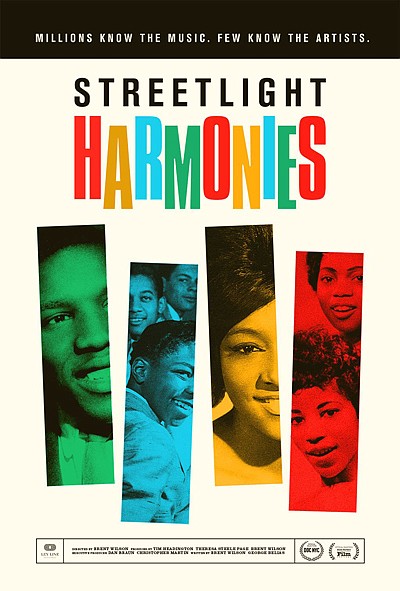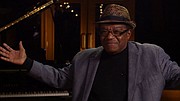Way before they were crying in the club, folks were “Crying In The Chapel.” The Orioles’ 1953 hit came at the advent of doo-wop, a musical genre created in Black neighborhoods on America’s East coast at the height of the Cold War Era. Created by the first generation of children of the Great Migration, doo-wop was a youth-generated genre as well.
With childhoods shaped by city culture, these adolescents grew up mere miles from the best that fashion, theater, and music had to offer. That same promise of glamour and romance marked doo-wop music. In addition, hits from music groups of the 1940s like The Ink Spots such as “My Prayer” certainly made an impression on teens looking to express their own feelings about love, and become stars themselves.
Director Brent Wilson’s new eighty-three minute documentary “Streetlight Harmonies,” now available on Amazon Video and DVD, is a sweet trip down memory lane to an innocent time in American music, marked by the starry-eyed stylings of teen groups like Frankie Lymon and the Teenagers, The Drifters, The Platters, and many more. Full of archival footage of musical performances of the biggest hits of the day like “Why Do Fools Fall in Love” and “Earth Angel” is both a lyrical walk down memory lane and a melodious history lesson on the foundations of popular music.
Ley Line Entertainment
Little Anthony of hit-making doo-wop group Little Anthony and The Imperials in doc “Streetlight Harmonies.
Sammy Strain (Little Anthony and the Imperials), Barbara Jean English (The Clickettes), Lala Brooks (The Crystals), Ron Dante (lead voice for cartoon band The Archies) and others provide commentary on their experiences in shaping a genre that had a profound role in shaping both Rock and Roll and Rhythm and Blues. Both would eclipse doo-wop and reach worldwide popularity. En Vogue’s Terry Ellis and Cindy Herron, NYSNC’s Lance Bass, and Brian McKnight also appear, and discuss how their own music was influenced by doo-wop.
A high-flying television appearance by Frankie Lymon and The Teenagers was life-altering for Strain. The variety show “Frankie Laine Time,” had erected a prop cement wall for their act. The Brooklyn raised ninth-grade drop-out and self-described “juvenile delinquent” recalls an interview with The Baltimore Times, “When I saw Frankie Lymon jump over that wall, I was amazed. It just opened up a whole new world for me being a teenager at the time.” He instantly got a sense of purpose. “I just knew that I was going to sing!” he says. Strain ended up being a member of several popular groups including The Fantastics and The O’Jays.
Streetlight Harmonies explains Italian-Americans, who often lived in neighborhoods adjacent to the growing Black neighborhoods on America’s East Coast, figured prominently in many of the white doo wop acts.
Ron Dante had one of early pop’s biggest hits with “Sugar Sugar.” A Staten Island native, he started out as a guitarist and doo-wop singer who used the unique landscape of the city to hone his craft as an adolescent. “The Staten Island Ferry Terminal,” he recalls, “was where I rehearsed with my group. Late at night, it would be open and it was a great area.”
An extremely successful music producer for many decades, Dante cites doo-wop’s significant impact on the music that came after it. “It’s the basis of most background harmonies that have been on record since the ’50s from these wonderful groups that developed it on street corners, subways and terminals—wherever there was some nice echo. It’s totally influential and exists, to this day.”
As much as the music provides a literal mellifluous trip back in time, Streetlight Harmonies also reminds us that doo-wop was also the soundtrack of an epically fraught era in American history. Doo wop’s heydey from the mid-fifties to early sixties paralleled the height of the fight for civil rights. The groups being both young and mostly from the Northeast, weren’t familiar with overt structural racial discrimination until they went on tour. Remembers Strain,” We saw that things were different in other parts of the country. It was a culture shock. I did gigs where white people were on one side of a rope they put up, Blacks on the other. The groups had to literally sing facing the wall. Eventually, they started commingling. The rope was dropped. We had a lot to do with that.”
Full of music, memories, Streetlight Harmonies is a charming reminder of a gentler time for many and a pleasant introduction to pop music’s beginnings made all the better by commentary of those who were actually there.

